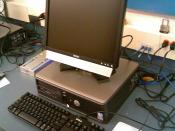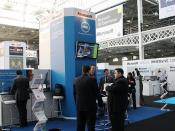We will first try to analyze the pc industry by the help of Porter's Five Forces Model and then continue with explaining Dell's business model, its positioning, and its competitive advantages, which heavily depend on extremely successful direct sales model and supply chain management. We will wrap up the case with some recommendations.
The PC industry has started to develop fast in the 80's when IBM, the leader of the industry thanks to the first mover advantage, launched its first PC series and later on when numerous small companies entered the market. PC is a new product and companies had to create the demand to it from the scratch. We will apply the Porter's 5 Forces model to examine the PC market and see how forces of competition influence the profitability of the market players starting with;
Potential Entrants;
* Initial investment is relatively low,
* Brand loyalty, on average, is very low (except Apple),
* Switching cost of the market players seem to average,
* Wintel standard limits the opportunity of differentiation,
* Maintaining cost advantage is very difficult,
As a result, the threat of new entry is high and it lowers the profitability of the industry.
Suppliers;
* Proprietary standards and customer desire for compatible pcs strengthens Microsoft and Intel's hand, they use this power to suck up the profits from the industry,
* Other inputs (large but not profitable segment, see appendix 1) are like commodities,
Suppliers are very influential and strong in pc industry and they lower the profits of manufacturers.
Buyers (Customers);
* Low switching cost-wintel,
* Growing end user knowledge-low brand loyalty,
* Resellers and retailers increasingly control customer interface,
* Threat of backward integration by resellers as channel consolidates,
Buyers' are powerful and their power continues to increase as a result of...



Good work!
This essay provides excellent information on Dell.
0 out of 0 people found this comment useful.